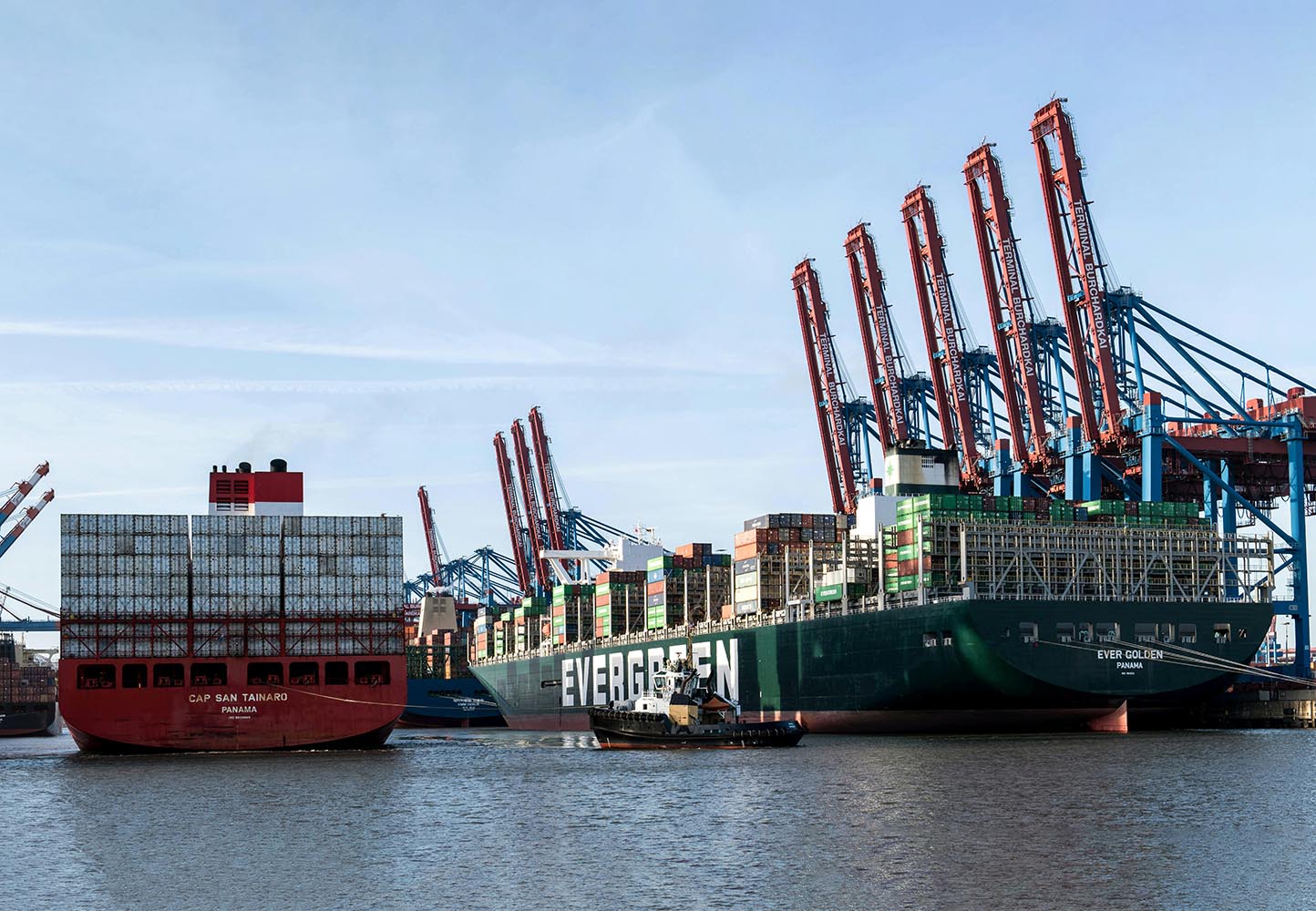
CIMAC guidelines for using marine fuels containing FAME
One of the most accessible methods for decarbonising the shipping industry is the use of biofuels derived from biomass. However, the current availability of biofuels is insufficient to meet established targets. While it serves as an initial step, further technical innovation and investment will be required to enhance the adoption of this decarbonisation pathway. The development of biofuels is ongoing, with expectations for greater differentiation in biomass sources, processing methods, and fuel quality. To support this transition, this year, the International Organization for Standardization (ISO) released an updated version of the ISO 8217 Specifications for marine fuels, now permitting the use of Fatty Acid Methyl Esters (FAME) up to 100% in specific fuel grades.
FAME has been used extensively in road transportation, providing a wealth of operational experience. However, its application in the maritime industry requires careful handling of these products. In June, Working Group 7 of the International Council on Combustion Engines (CIMAC), a global non-profit association that represents the interests of engine manufacturers, users, component suppliers, and fuel and lubricant companies involved in the internal combustion engine industry, released a guideline on marine-fuels containing FAME. This document offers guidelines for shipowners and operators on the safe use of biofuels, aligned with the release of ISO 8217:2024. It focuses primarily on FAME and its blends with fossil fuels.
CIMAC Guidelines provide insights into specific technical aspects, helping readers gain a deeper understanding of a topic and assess it from a technical standpoint.
FAME, commonly known as biodiesel, is produced from fats and oils through a process called transesterification. This process involves the reaction of triglycerides with alcohol (usually methanol) in the presence of a catalyst to produce methyl esters and glycerol. The resulting FAME can be used as a renewable fuel for diesel engines, offering a lower carbon footprint compared to traditional fossil fuels.
The adoption of FAME in marine applications represents a significant step towards decarbonising the shipping industry. Unlike fossil fuels, FAME is biodegradable and non-toxic, reducing the environmental impact of fuel spills. Moreover, FAME can be produced from various feedstocks, including used cooking oil, plant oils, and animal fats, making it a versatile and sustainable option.
Since the Paris Climate Agreement in 2015, the push for decarbonisation has accelerated across various industries, including shipping. Although initially excluded from the agreement, the maritime sector has voluntarily undertaken significant steps toward sustainability. The adoption of FAME as a marine fuel is one such measure,supported by new regulations and standards such as ISO 8217:2024, which allows the use of up to 100% FAME in specific fuel grades.
The regulatory landscape for marine fuels is evolving, with increasing emphasis on reducing sulphur content and GHG emissions. The International Maritime Organization (IMO) has implemented regulations such as the Global Sulphur Cap, which limits the sulphur content in marine fuels to 0.5% m/m. FAME, with its low sulphur content, helps shipowners comply with these regulations while also contributing to the reduction of GHG emissions.
FAME specifications and quality control
To ensure the quality and performance of FAME, it is essential to adhere to established standards such as EN 14214 (European standard) and ASTM D6751 (U.S. standard). These standards specify the requirements for FAME content, cold flow properties, oxidation stability, and other critical parameters. The CIMAC guideline emphasises the importance of proper production and purification processes to meet these specifications and prevent issues such as filter clogging and poor cold flow performance.
FAME’s chemical properties can vary significantly depending on the feedstock and production process. Therefore, strict quality control measures are necessary to ensure consistent performance. Shipowners should work closely with suppliers to obtain FAME that meets the required specifications and is free from contaminants that could harm engine components.
When integrating FAME into marine fuel systems, several operational factors must be considered:
Material compatibility: FAME can react with certain materials, potentially causing damage to plastics, elastomers, and metals in the fuel system. Shipowners should verify the compatibility of all materials, including seals, gaskets, and coatings, with FAME. For instance, some rubber materials may degrade when exposed to FAME, leading to leaks and fuel system failures. It is crucial to consult with equipment manufacturers and conduct thorough compatibility testing before using FAME blends.
Storage and handling: FAME’s higher solvency power can disperse dirt and residues in fuel tanks, leading to increased filter cleaning frequency. Tanks should be stripped and cleaned before loading FAME for the first time, and regular inspections should be conducted to prevent water buildup and microbial growth. FAME is hygroscopic, meaning it can absorb water from the environment, which can lead to microbial contamination and fuel degradation. Proper storage practices, such as keeping tanks full to minimise air exposure and using water separation equipment, are essential.
Fuel treatment systems: Proper management of fuel cleaning and separation processes is crucial. FAME tends to attract and hold water, increasing the risk of microbial contamination. Separators should be adjusted to match the density and viscosity of FAME, and adequate spare parts should be available to handle potential increases in maintenance. Regular monitoring of fuel quality and system performance is necessary to ensure the efficient operation of fuel treatment systems.
Combustion properties: FAME has a lower calorific value compared to fossil fuels, which may require adjustments in fuel supply systems and engine control settings. Ensuring accurate determination of net specific energy (NSE) using methods like ASTM D240 is essential for efficient engine operation. Engine control systems should be calibrated to account for the different combustion characteristics of FAME, such as higher oxygen content and potential for increased NOx emissions.
Emission control systems: FAME may contain higher levels of catalyst poisons such as sodium, potassium, and phosphorus, which can affect the performance and lifespan of selective catalytic reduction (SCR) systems. Shipowners should consult SCR suppliers and provide representative fuel analyses to mitigate these risks. Regular maintenance and monitoring of SCR systems are necessary to ensure compliance with emission regulations and avoid costly repairs.
The CIMAC guideline includes valuable insights from industry trials and operational experiences with FAME blends in both two-stroke and four-stroke engines. Vessels have successfully operated on blends ranging from B30 (30% FAME) to B100 (100% FAME), demonstrating the feasibility of using FAME as a marine fuel. While some minor issues such as filter clogging and increased maintenance have been reported, overall performance has been positive.
For example, a case study involving a fleet of coastal vessels operating on B50 (50% FAME) showed a significant reduction in GHG emissions and improved fuel efficiency. The vessels experienced minimal operational issues, and the crew quickly adapted to the new fuel management practices. These positive outcomes highlight the potential for broader adoption of FAME in the maritime industry.
Future directions and research
Ongoing research and pilot projects aim to further refine the use of FAME in marine applications. Future studies will focus on the long-term impacts of FAME on engine components, fuel delivery systems, and overall vessel performance. The development of advanced monitoring technologies and predictive models will enhance fuel management practices and ensure the safe and efficient use of biofuels in the maritime industry.

Innovations in feedstock sourcing and production processes are also expected to improve the sustainability and cost-effectiveness of FAME. Researchers are exploring the use of algae and other non-food crops as feedstocks, which could reduce competition with food production and further decrease the environmental impact of FAME production.
The journey towards sustainability in the maritime sector is complex and multifaceted, but with continued research, collaboration, and innovation, the potential for biofuels like FAME to revolutionise marine transportation is immense. The findings and recommendations from the CIMAC guideline serve as a valuable resource for shipowners and operators committed to making this transition.








